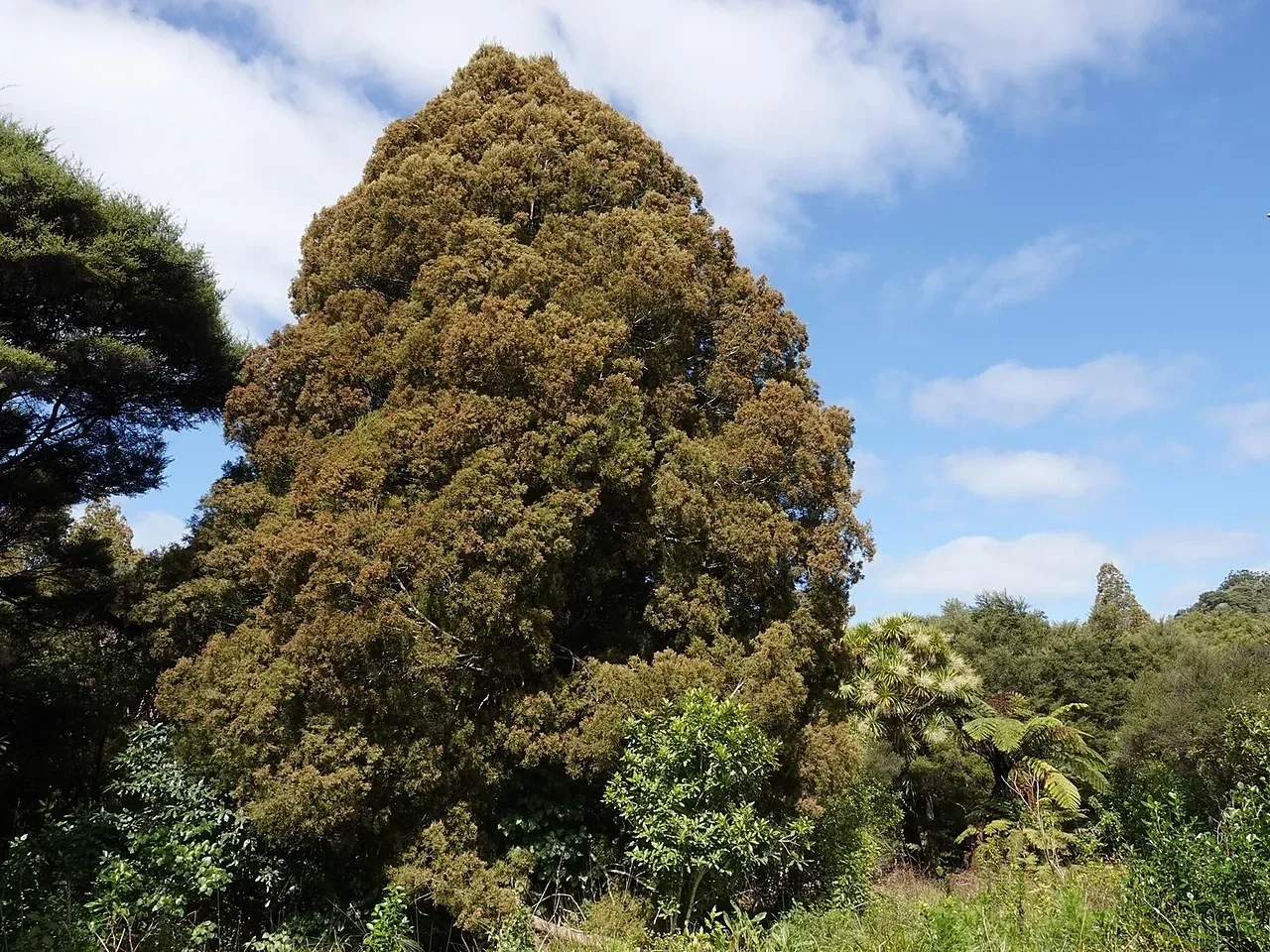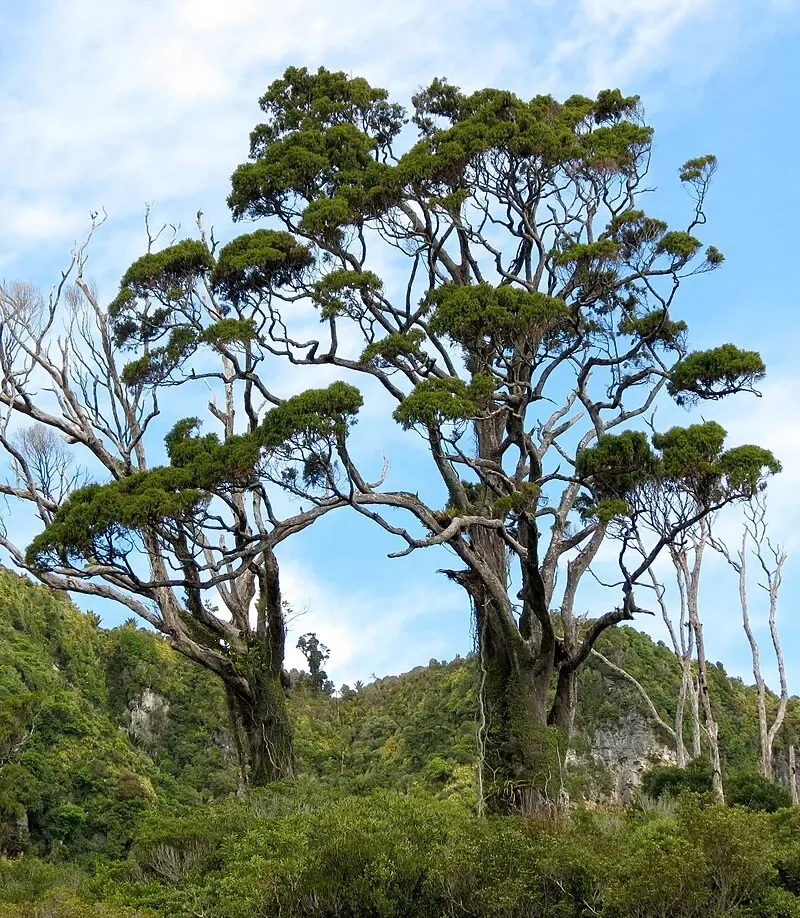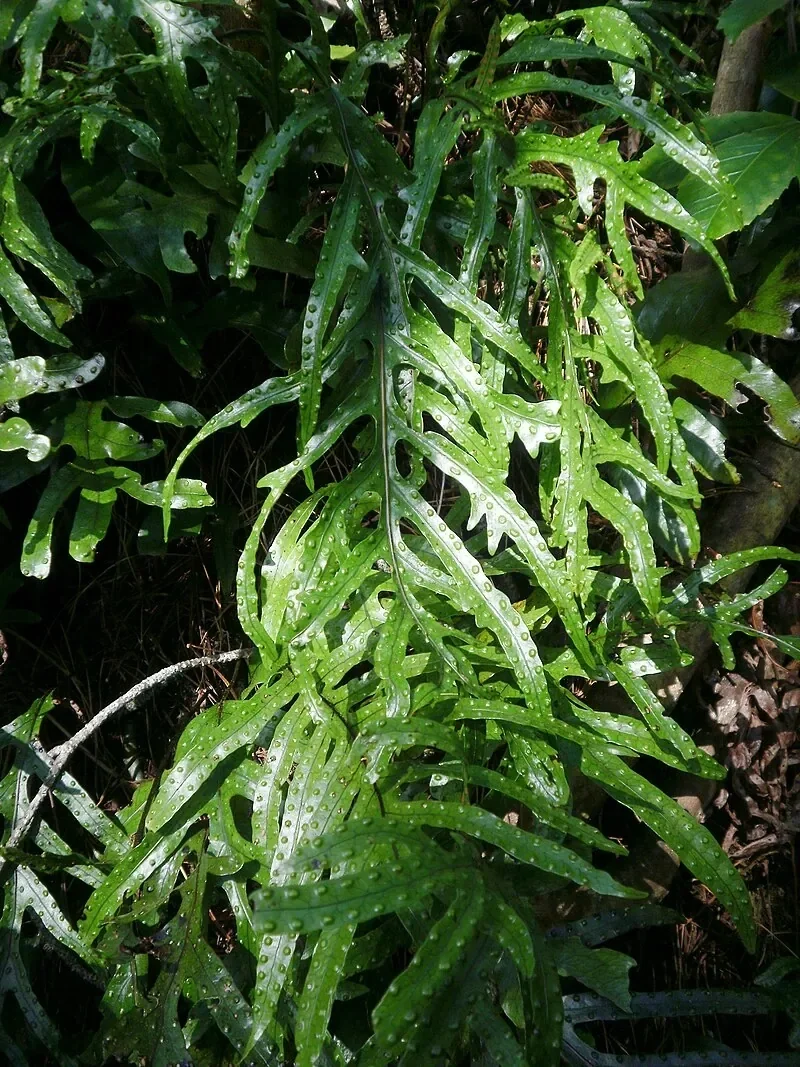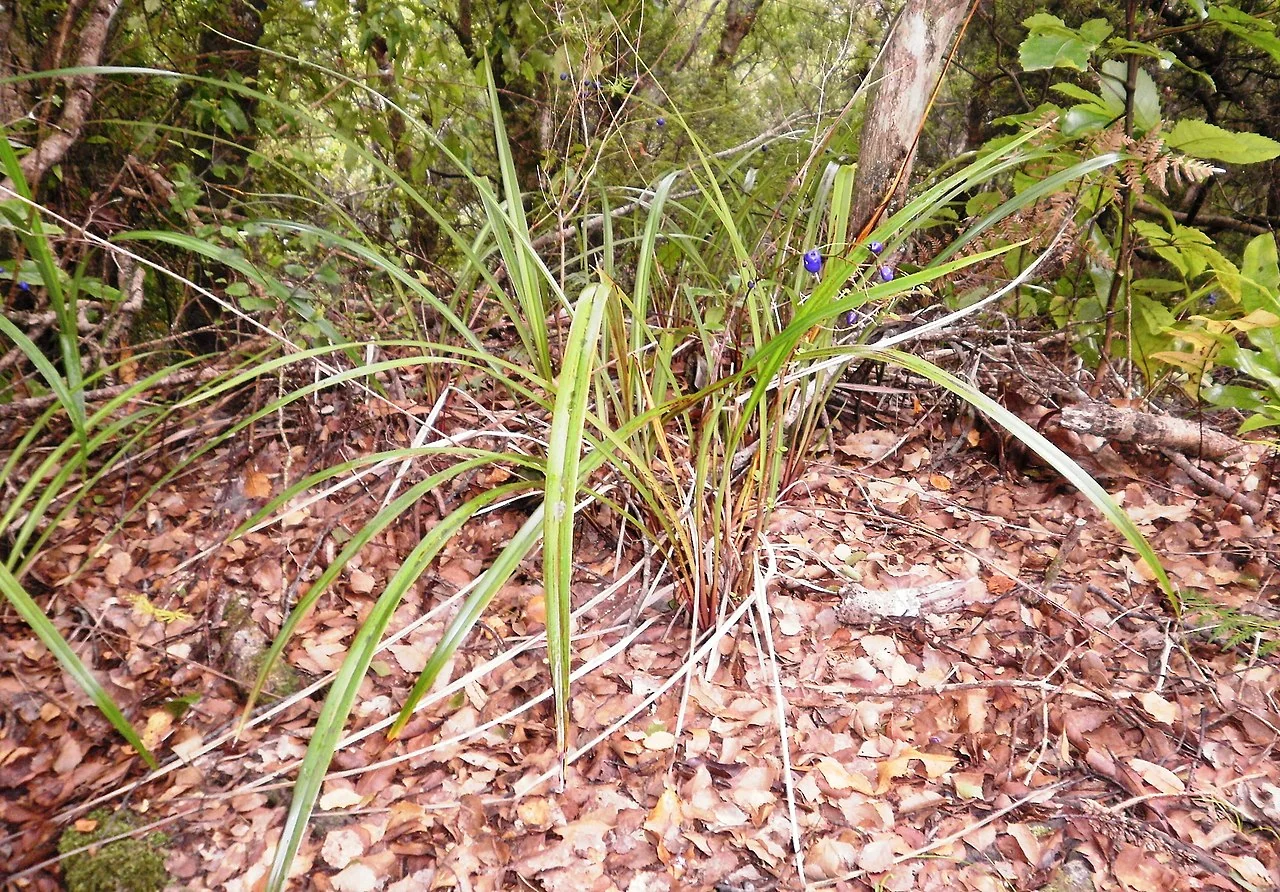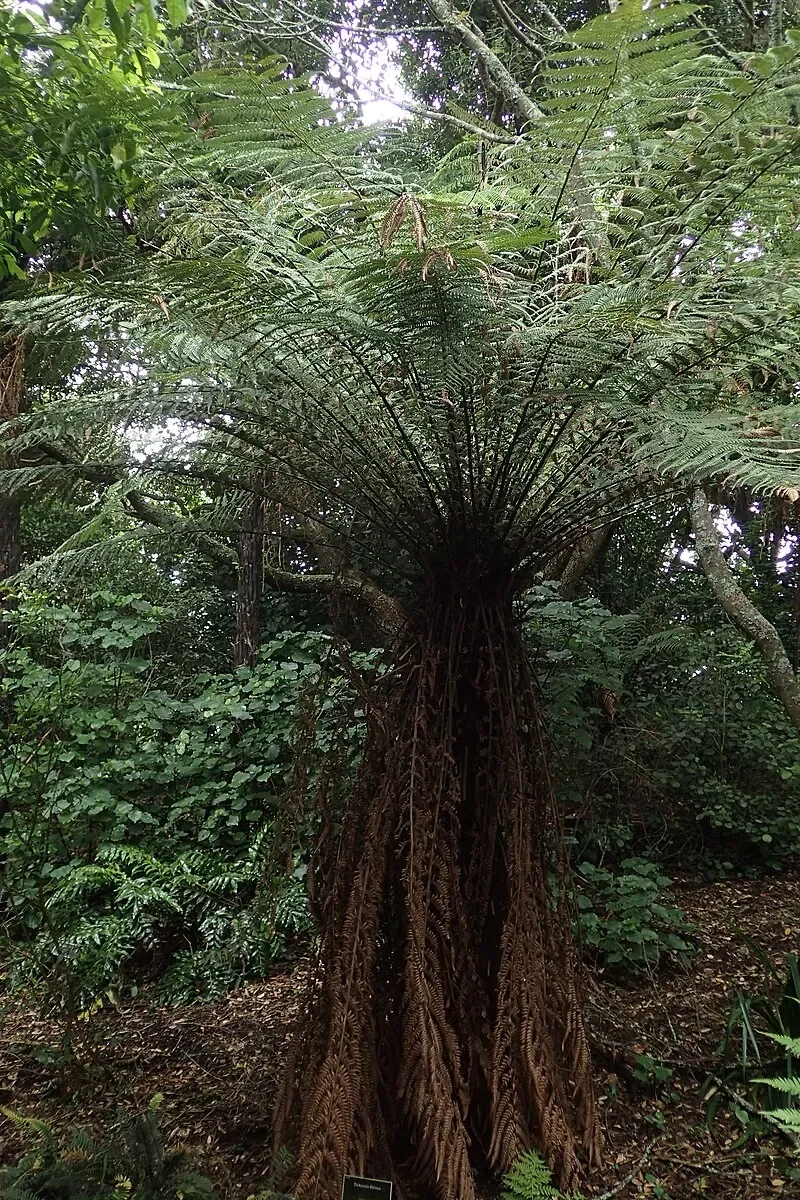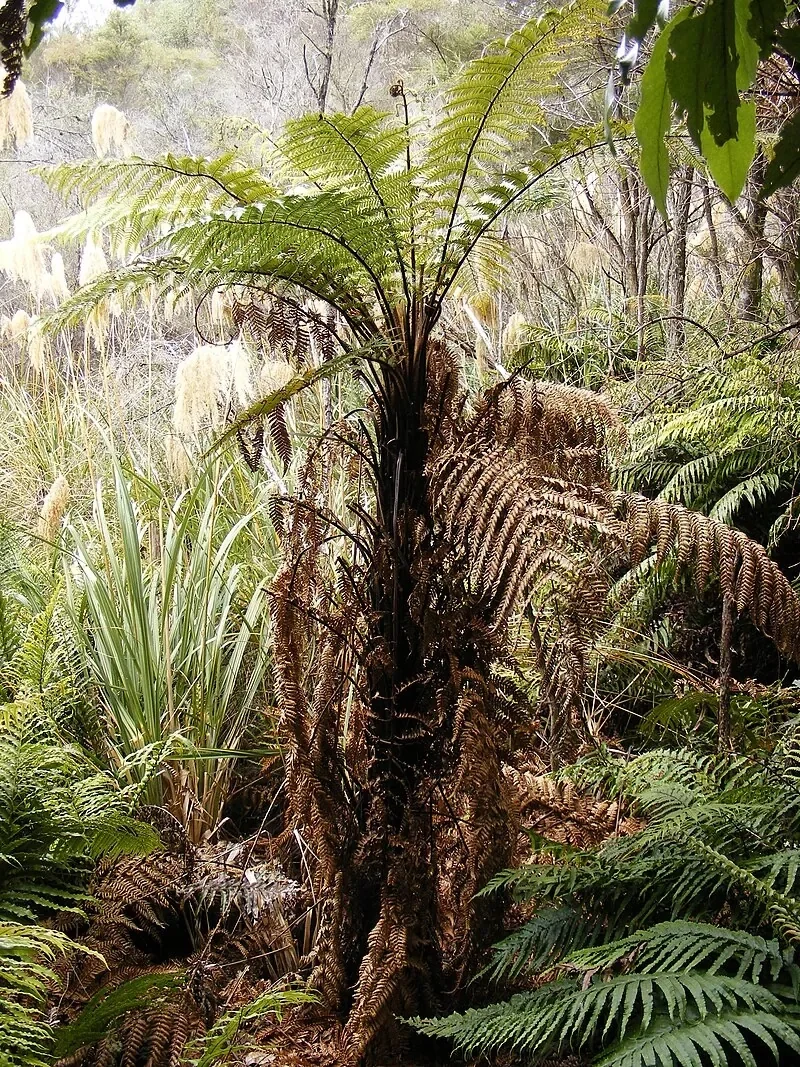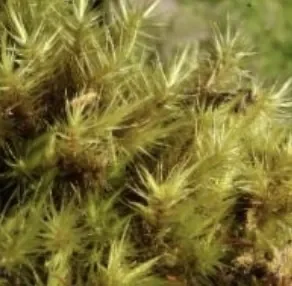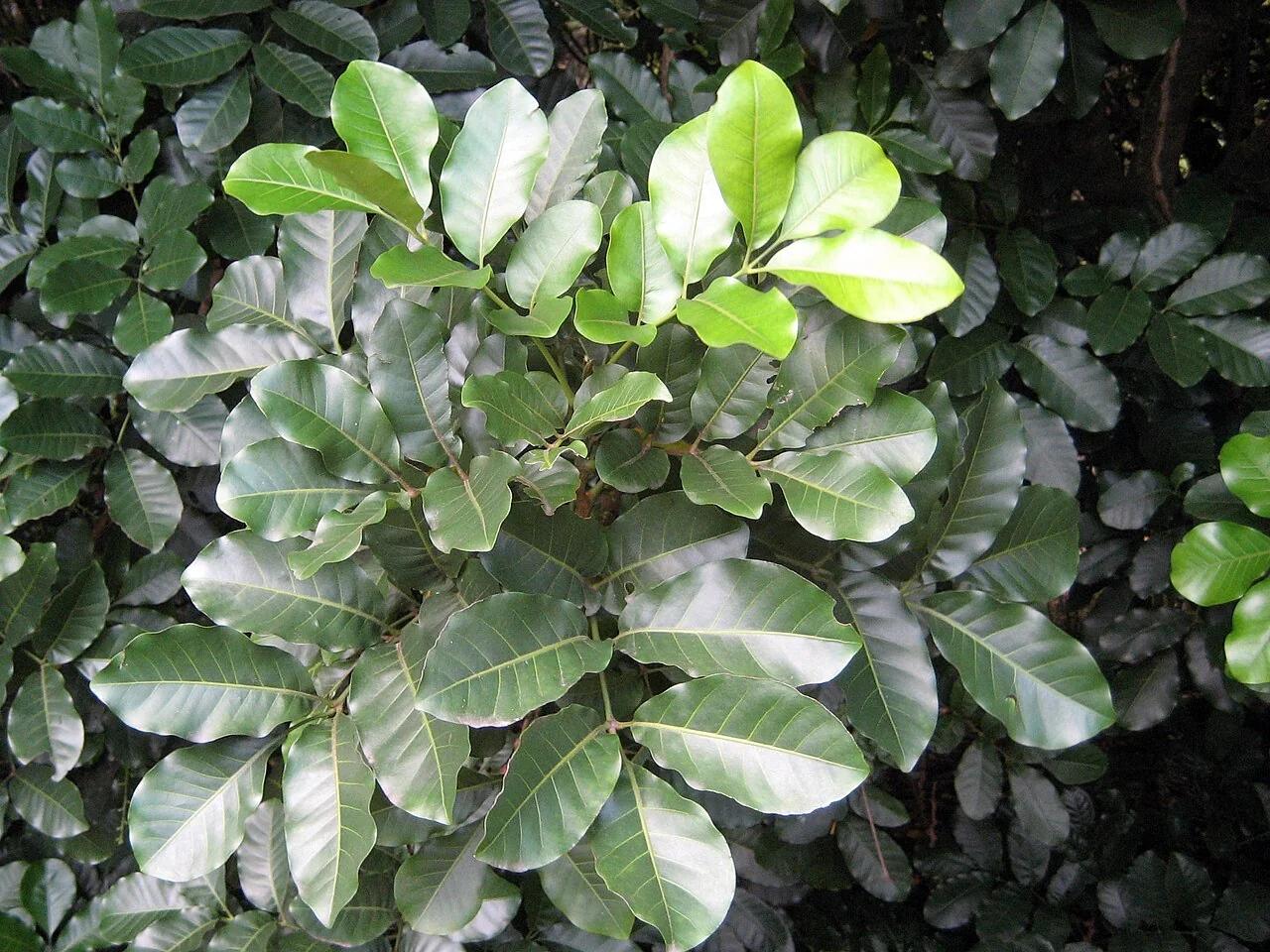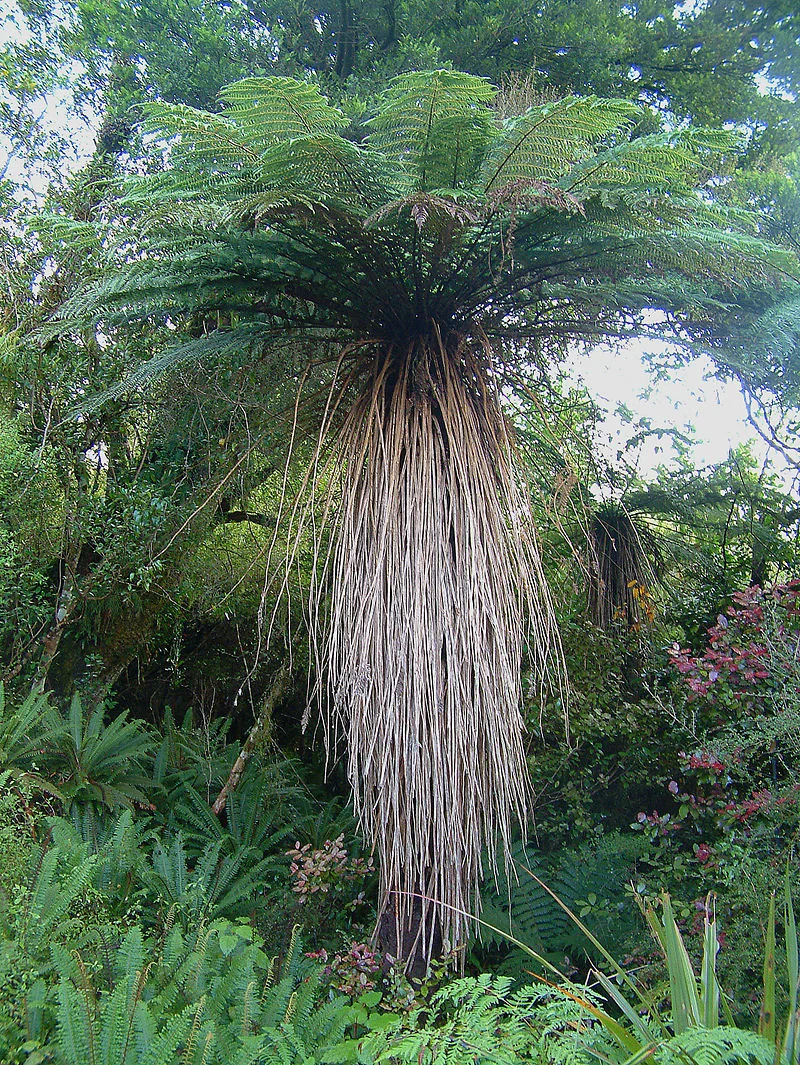
Soft Tree Fern
Cyathea smithii
The Soft Tree Fern, or Katote (Cyathea smithii), is a graceful and elegant tree fern native to New Zealand. It is easily recognized by its slender trunk, which is often covered in a distinctive "skirt" of old, dead fronds. Its own fronds are soft and delicate to the touch, giving it its common name. This fern is found in cool, moist forests throughout the country and is a popular choice for shady gardens, where it brings a sense of the New Zealand bush among New Zealand's native ferns.
Cyathea smithii, commonly known as the soft tree fern or kātote, is a species of tree fern native to New Zealand. It is an evergreen fern or tree that can grow up to 8 meters (24 feet) tall, though it tends not to reach into the canopy like some other tree ferns. It has a slender, fibrous trunk. Cyathea smithii is characterized by its thin, soft, and broad fronds, which are typically green to light-green or golden yellow. A defining and easily recognizable feature of Cyathea smithii is the retention of dead frond stalks (stipes and rachises) as a "skirt" around its trunk. This skirt allows other ferns and epiphytes to grow on the lower parts of the trunk. This species is found throughout New Zealand, including the North and South Islands, Stewart Island, the Chatham Islands, and the Auckland Islands, marking the southernmost limit for tree ferns globally. It is a hardy, subcanopy species that favors colder, wetter conditions, often found in montane forests and extending into lowlands in southern regions. It prefers bright shade to shade, even moisture, and average, well-drained soil. It is also noted for being one of the most cold-tolerant tree ferns.

Plant Description
Botanical Features
Cyathea smithii, commonly known as the Soft Tree Fern or Kātote, is an evergreen tree fern native to New Zealand. It typically grows up to 8 meters tall, though it tends not to reach into the canopy like some other tree ferns, and has a slender, fibrous trunk. A defining and easily recognizable feature is the retention of dead frond stalks (stipes and rachises) as a "skirt" around its trunk, which allows other ferns and epiphytes to grow on the lower parts of the trunk. Its foliage consists of soft, green, lance-shaped fronds that are 1-2 meters long. This species thrives in colder, wetter conditions and is often found in montane forests, though it can also occur in lowland areas in the southern parts of its range. It is considered the most cold-tolerant among New Zealand tree ferns, preferring bright shade to shade, consistent moisture, and average, well-drained soil.
Quick Facts
Tree Fern Summary
| Scientific Name | Cyathea smithii |
|---|---|
| Common Name | Soft Tree Fern, Katote |
| Family | Cyatheaceae |
| Height | 8-12 m |
| Spread | Up to 3 m |
| Water Needs | High, prefers moist well-drained soil |
| Light | Shade to partial shade |
| Frost Tolerance | One of the hardiest NZ tree ferns |
| Salt Tolerance | Low; requires protection from salt exposure |
| Growth Rate | Slow |
| Lifespan | Long-lived |
Climate Best Suited to
Soft Tree Fern (Cyathea smithii) is found in cool, moist forests throughout New Zealand from sea level to about 1000 m elevation. It thrives in temperate maritime climates with consistent moisture, high humidity, and protection from extreme temperatures. This hardy tree fern is well-adapted to New Zealand's variable climate conditions.
Regional Suitability
| City | Climate Suitability |
|---|---|
| Whangārei | Ideal |
| Auckland | Ideal |
| Hamilton | Ideal |
| Tauranga | Ideal |
| Rotorua | Ideal |
| Gisborne | Ideal |
| New Plymouth | Ideal |
| Napier | Ideal |
| Whanganui | Ideal |
| Palmerston North | Ideal |
| Wellington | Ideal |
| Nelson | Ideal |
| Christchurch | Ideal |
| Dunedin | Ideal |
| Invercargill | Ideal |
Natural Habitat
Typical Environments
Understand the natural habitat of Soft Tree Fern (Cyathea smithii), including its geographical distribution, preferred environmental conditions, and the types of forest ecosystems where it thrives. This knowledge is crucial for replicating natural conditions in cultivation.
- Geographical distribution throughout New Zealand from sea level to 1000 m elevation.
- Preferred forest types and microhabitat conditions.
- Associated plant communities and typical forest companions.
Plant Conservation
Cyathea smithii, also known as the soft tree fern or kātote, is native to New Zealand and is found across its major islands, including the North and South Islands, Stewart Island/Rakiura, the Chatham Islands, and the Auckland Islands.
According to the New Zealand Threat Classification Series, Cyathea smithii was classified as "Not Threatened" in both 2012 and 2017. Regional conservation statuses are also assessed, leveraging national assessments.
Growing Requirements
Soil Requirements
This fern thrives in humus-rich, moist, and well-drained soil. It loves plenty of organic matter, so adding compost or leaf mould to the soil when planting is beneficial. Good drainage is important to prevent the trunk from rotting.
Light Requirements
The Soft Tree Fern is a shade-loving plant. It needs protection from direct sun, which can burn its delicate fronds. A position under the canopy of larger trees or in a shaded gully is ideal.
Water Requirements
Consistent moisture is vital. The soil should be kept damp at all times, but not waterlogged. Water the trunk as well as the surrounding soil, especially in dry weather. High humidity is also appreciated.
Planting Guide
-
Best Time to Plant
Plant in spring or autumn when the soil is moist and the weather is mild. Avoid planting during hot, dry summer conditions or during frosty winter periods.
-
Choosing a Location
Choose a sheltered, shady spot with moist, well-drained soil. Make sure it is protected from strong winds and has adequate space for the mature size of this impressive fern.
-
Planting Steps
Dig a hole rich in organic matter. Place the fern in the hole so that the top of the root ball is level with the surrounding soil. Backfill with enriched soil and water well. Mulch around the base to retain moisture.
Ecological Significance
Ecosystem Roles
Soft Tree Fern (Cyathea smithii) serves as a living ecosystem, with its fibrous trunk and dense frond canopy supporting a remarkable diversity of other plants and animals in New Zealand's native forests.
- Fibrous trunk provides habitat for epiphytic plants, orchids, and smaller ferns
- Dense fronds create microhabitats for insects, spiders, and forest invertebrates
- Creates ideal growing conditions for other shade-loving native plants
- Important structural component of native forest understory ecosystems
- Helps maintain forest moisture levels and provides soil stabilization
Uses and Significance
Garden Uses
- Perfect centerpiece for native forest garden settings
- Excellent for creating naturalistic shade gardens
- Ideal for sheltered courtyards and woodland paths
- Outstanding for erosion control on shaded slopes
- Valuable for habitat restoration and bush regeneration projects
Landscaping Applications
Discover how Soft Tree Fern (Cyathea smithii) can be effectively integrated into various landscaping designs. This section offers creative ideas and practical advice for using this iconic native fern to enhance the beauty and authenticity of your outdoor spaces.
- Design ideas for native forest gardens and naturalistic landscapes.
- Best uses in shade gardens, courtyards, and protected areas.
- Combining with other native plants for authentic forest communities.
Seasonal Care Calendar
Spring
New fronds, known as croziers, will start to unfurl. This is a good time to feed the fern with a liquid fertilizer to support new growth. Ensure consistent moisture as growth accelerates.
Summer
Water regularly to keep the soil and trunk moist. Misting the fronds on hot days will help to increase humidity. Monitor for adequate shade protection during peak summer heat.
Autumn
Reduce watering as the weather cools. The old fronds will start to form the characteristic skirt around the trunk. This is natural and should be left in place for insulation.
Winter
This fern is quite frost-hardy, but in very cold areas, it is a good idea to protect the central crown with a handful of straw. Reduce watering but don't allow complete drying.
When to Prune and How Much
Overview
Soft Tree Fern (Cyathea smithii) requires minimal pruning to maintain its natural form and health. The natural skirt of old fronds is an important feature that should generally be preserved.
- Remove only completely dead, brown fronds at any time of year
- Cut fronds cleanly at the base of the trunk, leaving no stubs
- Preserve the natural "skirt" of old fronds - this provides insulation and habitat
- Never cut green or partially green fronds unless damaged
- Avoid cutting the growing tip (crown) at all costs - this will kill the fern
- Use clean, sharp tools to prevent disease transmission
The distinctive skirt of old fronds is part of this tree fern's charm and ecological function, providing habitat for epiphytes and insulation for the trunk.
How to Grow Soft Tree Fern
The Soft Tree Fern, or Katote, is a graceful and iconic native tree fern that brings a touch of ancient New Zealand forest to any shaded garden. Its distinctive skirt of old fronds and delicate, soft fronds make it a popular choice for woodland settings, ferneries, and sheltered courtyards. While it is one of the hardiest New Zealand tree ferns, successful cultivation requires attention to its specific needs, particularly regarding consistent moisture, shade, and protection from strong winds. Understanding its propagation methods can help in expanding its presence and ensuring its continued success.
From Spores
Propagating Soft Tree Fern from spores is the primary method for reproduction in nature and can be a rewarding endeavor for patient gardeners. Collect mature spores from the undersides of healthy fronds when they are dark brown and easily dislodge. Sow the spores onto a sterile, moist substrate, such as peat or a specialized fern-growing medium, in a sealed container to maintain high humidity. Keep the container in a warm, dimly lit location. Germination can take several weeks to many months, forming a green, moss-like prothallus. Eventually, tiny fern sporophytes will emerge. Once they are large enough to handle, transplant them into individual pots and gradually acclimate them to lower humidity before planting out.
From Nursery-Grown Plants
For most gardeners, purchasing nursery-grown plants is the most practical and successful method for cultivating Soft Tree Fern. Ensure you source plants from reputable native plant nurseries that specialize in ferns. When transplanting, minimize root disturbance and plant into a well-prepared site that meets all its environmental requirements: shade to partial shade, consistently moist but well-drained, humus-rich soil, and protection from strong winds. Regular watering, especially during dry periods, and occasional misting of the fronds will be essential for the plant's establishment and long-term health. Remember to leave the skirt of old fronds intact, as it provides insulation and habitat.
Pests and Diseases
Naturally Healthy
Soft Tree Fern (Cyathea smithii) is generally very healthy with excellent natural resistance to most pests and diseases. Most problems are related to inappropriate growing conditions rather than pest attacks.
Common Issues
- Scale insects: Can occasionally occur, especially in dry conditions
- Fungal problems: Rare, but can occur with poor air circulation or waterlogged conditions
- Slugs and snails: May damage young fronds in some situations
Environmental Stressors
- Sun scorch: Direct sunlight can burn fronds, especially in hot, dry conditions
- Drought stress: Inadequate watering causes frond browning and poor growth
- Wind damage: Strong winds can damage delicate fronds
- Frost damage: Severe frosts can damage growing tips in young plants
Prevention
The best approach is to provide optimal growing conditions: consistent moisture, shade protection, shelter from wind, and good air circulation. Healthy ferns in suitable conditions rarely have serious pest or disease problems.
Cultural Significance
Cyathea smithii, commonly known as the soft tree fern or kātote, holds significant cultural importance, particularly for the Māori people of New Zealand.
Key Aspects of Cultural Significance Include:
- Traditional Names: The fern is known by several Māori names, including kātote, neineikura, and whē.
- Food Source: The "iho" (heart) of the kātote was traditionally consumed by Māori, noted for its sweet taste and eaten raw. This was in contrast to other tree ferns, whose hearts were often bitter. The pith also served as a starch source, though its resin content made it a less preferred food, possibly reserved for times of scarcity.
- Material Uses: The trunks of Cyathea smithii were utilized as a rough building material, for fencing, and in the construction of makeshift tracks.
- Tool and Weaponry: The hard, black fibers from the kātote, known as kaka ponga, were used to create points for "tārerarera" (throwing spears made from mānuka) and as barbs for arrows used by children for hunting birds.
- Domestic Applications: The rough texture of the tree fern's trunk was employed by the Tūhoe people to smooth adze handles during their manufacture.
- Medicinal Properties: The pith of Cyathea smithii was used in traditional medicine to prepare poultices for treating skin conditions and eye ailments.
Bonus Tip
The Soft Tree Fern (Cyathea smithii) is easily recognized by the distinctive "skirt" of old, dead fronds that remain attached to its trunk. Unlike some other tree ferns where old fronds are shed, this skirt is a natural and beneficial feature. It provides excellent insulation for the trunk, protecting it from temperature fluctuations and frost. Furthermore, this fibrous skirt creates a unique microhabitat, offering a home to various small ferns, mosses, and invertebrates. When caring for your Soft Tree Fern, resist the urge to remove this skirt, as it is vital for the plant's health and contributes significantly to its ecological role and aesthetic appeal.
